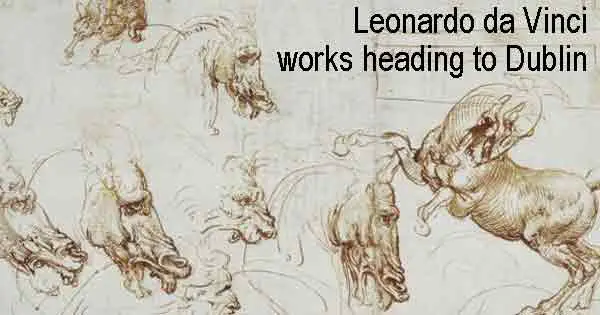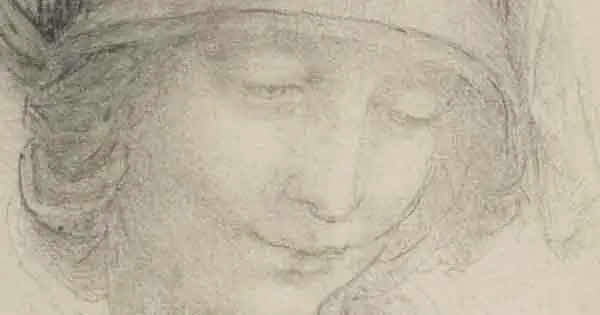A collection of drawings by Leonardo da Vinci are coming to Ireland and will be on display at the National Gallery in Dublin throughout the early summer.
There will be a total of ten works by the great Renaissance artist heading over to Ireland, but unfortunately not iconic paintings such as the Mona Lisa or the Last Supper.
What will be heading to our shores are works that provide a fascinating insights into the mind of Leonardo as they feature drawings of another of the artist’s great passions – science.

The selection includes anatomical drawings of internal organs as well as drawings of animals such as lions, horses, cats and … a dragon!
The works are heading to Ireland courtesy of the Royal Collection Trust (RCT) in the UK. The RTC manage millions of items such as paintings, books, furniture and more that have been collected by the British Royal family over the centuries.
The RTC has over 600 drawings by da Vinci and started taking them on tour around the UK – 10 at a time – in 2002.
The tour reached Belfast in 2012 but this will the first time the pictures will be displayed in the Republic.
Martin Clayton, head of prints and drawings at the RTC said: “It is a working collection, not a museum collection. The aim is to make it [accessible] to the public by opening up the palaces and lending works.
“You will be able to get face to face with the drawings. You can see the movement of his hand. It is that sense of intimacy you get from drawing rather than from painting.
“Drawing was the laboratory where he was trying out these ideas. He was drawing what he thought about the world and about the phenomena of the world.”

Sean Rainbird, director of the National Gallery of Ireland, says that the drawings demonstrate the exceptional range and scientific mind of da Vinci.
One of the pieces is called ‘Studies for Casting the Equestrian Monument to Ludovico Sforza’. It shows an attempt to develop apparatus needed for preparation of the heavy metal statue.
Rainbird said: “He is thinking through the techniques needed in order to create something like this large equestrian monument.”
Another work – called ‘A Map of a Weir on the Arno East of Florence’ – was drawn by da Vinci for the city officials who wanted to find an efficient way to prevent flooding.
Rainbird said: “You can see how the water moves across the weir. It is like he was up in a drone looking down, but he actually did the drawings on the ground.
“You really see a scientific bent. But then you also see his drawing of a branch of blackberries, which displays someone who is really observing nature.”
Rainbird says it is a great opportunity for people in Ireland to get a real glimpse into the inner workings of da Vinci’s mind.
He said: “In all of these drawings he is working something out. Of course, they were considered art, but this is how he worked things through visually. It was what the world looks like and how the world works.
“He was such an amazing draftsman. The detail and the sheer technical quality is unparalleled.”
Unfortunately for medics at the time of da Vinci, he never published his drawings. He worked as a court artist for much of his career and worked for wealthy households in Rome, Florence, Milan and Paris.

Clayton said: “He was a great anatomist but was not an important anatomist. He did not publish. And because he never published no one understood what he had done.
“One of the tragedies of his career was that all of his advances in anatomical understanding didn’t see the light of day. To this day they are the best drawings of particular structures that have ever been made. His art was better than photographs.”
The exhibition will take place from 4th May until 17th July. Entry is free but each person only has a designated amount of time.
You can book online from April at the National Gallery website.
newsletter.html”]
